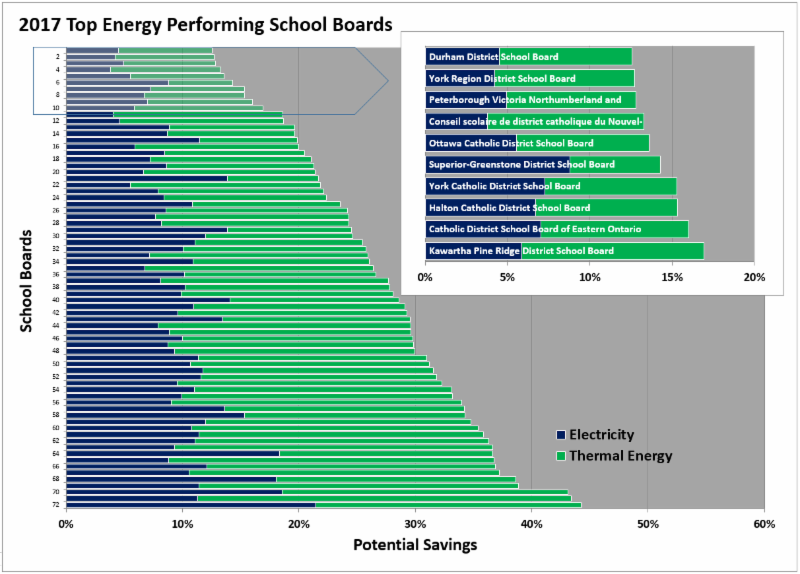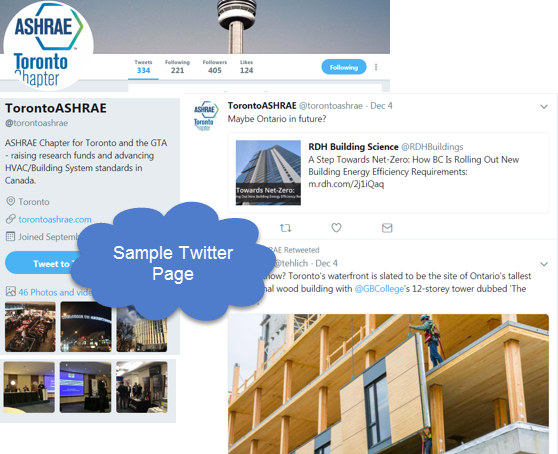|
FEBRUARY GAZETTE
| Our 96th year!
February 2017 - Vol 65, Issue 3
|
|
|
| Board of Governors |
President
President-Elect
Vice President
Modern Niagara
Treasurer
Secretary
Past President
Honeywell Building Solutions
The HIDI Group
|
|
|
| VIEWPOINT |
How Your Lifestyle Habits May be Affecting
HVAC and Energy
I was putting through an order with Amazon the other day and found myself ordering toothpaste, some might call that "a new low". But why drive to Shoppers Drug Mart, park, wade through the cosmetics section, wait in line for checkout, all for a basic item like toothpaste? This past holiday season was the first time in history that online shopping surpassed in-store sales in the USA. Canada is just slightly behind with 38% of holiday shopping purchased online. It is becoming cheaper and easier to purchase goods online, but what does that mean for our industry?
In the best performing shopping mall in Canada, Yorkdale, annual retail sales are $18,000 / sq. m. Most other retailers only deliver only a fraction of this amount. Wal-Mart for example, sells about $4,700 / sq.m. Amazon on the other hand has over 7 million sq.m. of warehouse space and takes in $178 billion annually. If we try to compare traditional retail space to warehouse space, Amazon comes in at $25,000 / sq.m. That is over 5 times more revenue per area than a big box retailer like Wal-Mart!
Taking a brief look at what the implications are in terms of energy use; according to Natural Resources Canada, the energy intensity of a warehouse is 0.66 Gj/sq.m. whereas retail space is 0.95 Gj/sq.m. Doing some math, the average big box store would produce $4,900 / Gj whereas an online retailer would produce $37,900 / Gj! Sure, there may be other factors that contribute to the overall energy use, but this is still a substantial difference.
Amazon is adding a new 55,000 sq.m. warehouse in Calgary, making it the 7th distribution centre in Canada. With the average Hudson's Bay store being only 12,000
sq.m. with an overall growth of only 0.7% during the past 5 years, it is becoming increasingly obvious where the future might lie for new construction projects. In my experience with retail projects, the mechanical and HVAC systems take a back seat to lighting and architecture. As a mechanical engineer, one might dream that the HVAC systems take more of a priority in a large-scale warehouse project!
Mike Genin, P. Eng.
|
|
|
|
| GAZETTE SPONSORS |
ASHRAE Toronto Chapter thanks the following
companies for their support of the Gazette
|
|
FEBRUARY DINNER MEETING SUMMARY
|
Working Together Towards Truly High-Performance Buildings
The February ASHRAE dinner meeting was a unique event as it was a joint venture between ASHRAE and CaGBC, the first of its kind. The presentation was delivered by
Ian Jarvis, P.Eng., and
Amandeep Deol, P.Eng. Ian is the President of
Enerlife Consulting, a green building performance consulting firm that uses data-driven analysis and benchmarking to provide customized solutions to each building to optimize building systems and minimize energy use and emissions. Their main services include energy advisory, program management, project development and implementation, building performance optimization and strategic sustainability goal-setting. Enerlife has been involved with several prominent projects including the University of Calgary, and Cadillac Fairview's Yonge Corporate Centre and Simcoe Place.
Ian and his team believe that the ultimate end-point for buildings is to achieve zero-net emissions, and the pre-requisite is achieving and sustaining high levels of energy efficiency. The main priority is existing buildings, with lessons learned applied to new construction.
However, there is currently a misalignment between the incentives that are provided in the buildings industry and the requirements for high-performance buildings. For example, designers are not being compensated to create more efficient buildings. There is a lack of knowledge about building performance, which the Enerlife team believes is the fundamental barrier to effective action. The new legislation to make energy use data of both public and private facilities publicly available will help eliminate some of this knowledge gap.
The release of this information may be a key turning point to pushing for higher energy efficiencies. A great example provided by Ian and Amandeep was the 2017 Top Performing School Boards in Ontario. 2014-2015 energy use was reported by each school board, and the boards were ranked according to their potential energy savings. This data provides utility providers and policy makers with direction to provide better incentive programs. It helps set standards for what is achievable and provides realistic goals to inform the action planning for individual school boards.

Image 1: 2017 Top Energy Performing School Boards
The focus for improving energy efficiency should place priority on the boards with the highest potential savings (lowest energy efficiency) at the bottom of the chart, and on their highest potential buildings. By studying the school boards with the lowest potential savings (highest energy efficiency) best practices and case studies for energy efficiency can be transferred to the sector as a whole. Of the 5,000 schools reviewed, 40% of the buildings account for 83% of the total potential energy savings. Achieving the full potential savings requires targeted testing and analysis followed by operational improvements and retrofits, and then monitoring and fine tuning over a period of time. This is what Enerlife specializes in providing to its customers.
One of the major sources of energy inefficiencies that Enerlife finds during their projects is a lack of integration between systems. Some of the buildings they work on were designed to be state-of-the art facilities with new HVAC technologies. But a lack of proper commissioning and system integration has limited the effectiveness of the technology. This was evident not only with the school board project, but also with hospitals and office buildings that Enerlife has been involved with. The issue is seen across all types of buildings. The good thing is that it can be fixed. Systems can be improved over time by testing and studying trend logs, implementing changes and monitoring improvements. It is also important to recognize that this is a team based approach that includes collaboration between designers, building operators and service contractors.
Amandeep, a senior project manager at Enerlife, provided an overview of the comparison between traditional energy audits compared to the performance-based conservation method developed by Enerlife. The performance-based conservation method is entirely data-driven and includes in-depth analysis of monthly and interval utility data, targeted system testing and system monitoring to develop conclusions. The approach uncovers issues related to building operations and maintenance, as well as retrofit opportunities.
Image 2: Comparison of performance-based conservation vs. traditional energy audit
Amandeep stressed the focus on "listening" to the building to develop solutions for system optimization. Collection of data through utility meters, sub-meters, BAS systems and service call records all provide data that can give insight to the sources of energy consumption and waste. This data collection and analysis takes time, and requires attention to detail. But the results and solutions that come from the analysis can vastly improve a building's energy and operational performance.
Ian finished the presentation by reiterating that the importance of the integrated building performance team that includes consultants, building managers and operators, and service contractors as vital to success. Communication within and between teams allows for sharing knowledge and ideas, leading to the best solutions.
The buildings industry has great opportunities as energy consumption data becomes publicly available, and owners demand higher performance. Achieving the full potential can substantially reduce carbon emissions, redirect millions of dollars saved on energy costs to reinvest in building improvements and provide thousands of new green jobs.
Michael
Peterson
, B.Eng.
(
WSP)
|
| WINTER CONFERENCE |
Above thirteen Toronto students at the Winter Conference: Eight sponsored by ASHRAE Toronto and five sponsored by their respective schools. I
n the front row
(L-R) Amos Chan, Alekhya Kaianathbhatta (Student Activities Chair), Atish Pereira, King Tung, Kevin Kai Ye, Jamie Fine
, Monica Brands. In the
back row
(L-R)
Rob Cooley, Helen Stopps, Kamran, Isaiah Littley, Doug Cochrane (Director and Regional Chair (DRC) Region II), Jason Gray, Kajen Ethirveerasingham, Burhan Khan, Altamash Baig, Hema Nookala.
Above Lakehead University poster at the winter conference. Impressive!
|
| AWARDS AND SCHOLARSHIPS |
ASHRAE Undergraduate Program Equipment Grant
Congratulations to
Dr. Alan S. Fung
and
Ryerson University
who were awarded an ASHRAE Undergraduate Program Equipment Grant (2018-19) - $5000. Their winning submission is for Design and Prototyping of a Cloud-based Smart Dual Fuel Switching System (SDFSS) for Residential Hybrid HVAC System for the Ryerson Engineering Program.
ASHRAE Student Scholarships
Two students were selected at the 2018 ASHRAE Winter Conference in Chicago to receive the following scholarships for the 2018-2019 academic year. For additional information about these and other scholarships, please visit
www.ashrae.org/scholarships.
ASHRAE Willis H. Carrier Scholarship - $10,000
Alex Dietrich, Ryerson University, Mechanical Engineering
ASHRAE Engineering Technology Scholarship - $5,000
Rex Camit, Seneca College of Applied Arts & Technology, Building Systems Technology
|
|
SAVE THE DATE
|
Save the Date
End of Year Golf Tournament and Cycling Event

Monday, June 4th
Nobleton Lakes Club
|
| SOCIAL MEDIA |
|
Get your ASHRAE Toronto news and more, instantly on Twitter!

We want to hear from all members of the industry and are excited to share HVAC/building system news and current chapter events.
|
|
|
|
|
Statements made in this publication are not expressions of the Society or of the chapter and may not be reproduced without special permission of the chapter.
|
|
|